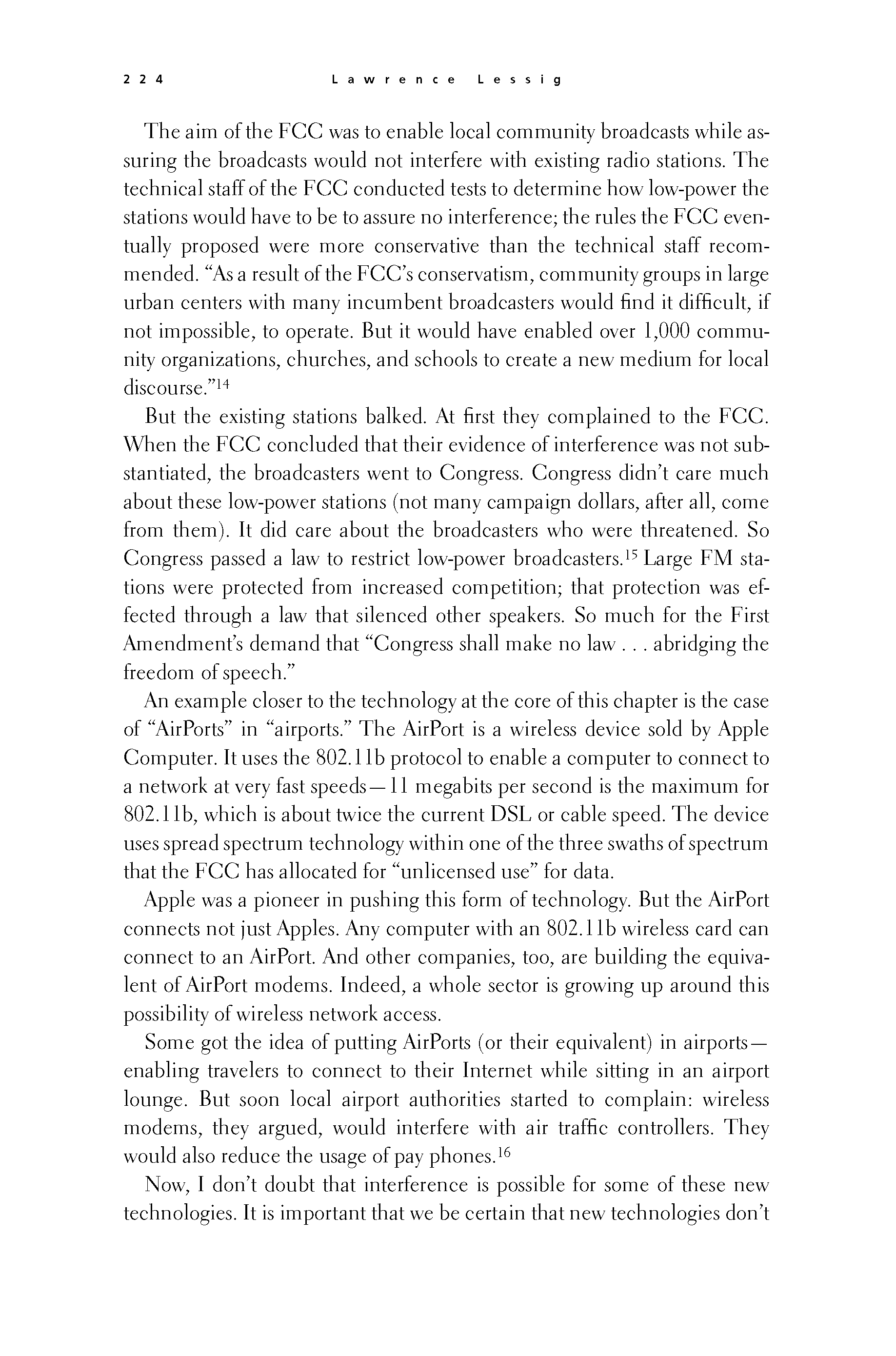 p223 _
-chap- _
toc-1 _
p224w _
toc-2 _
+chap+ _
p225
p223 _
-chap- _
toc-1 _
p224w _
toc-2 _
+chap+ _
p225
The aim of the FCC was to enable local community broadcasts while as-
suring the broadcasts would not interfere with existing radio stations. The
technical staff of the FCC conducted tests to determine how low-power the
stations would have to be to assure no interference; the rules the FCC even-
tually proposed were more conservative than the technical staff recom-
mended. "As a result of the FCC's conservatism, community groups in large
urban centers with many incumbent broadcasters would find it difficult, if
not impossible, to operate. But it would have enabled over 1,000 commu-
nity organizations, churches, and schools to create a new medium for local
discourse."[12-14]
But the existing stations balked. At first they complained to the FCC.
When the FCC concluded that their evidence of interference was not sub-
stantiated, the broadcasters went to Congress. Congress didn't care much
about these low-power stations (not many campaign dollars, after all, come
from them). It did care about the broadcasters who were threatened. So
Congress passed a law to restrict low-power broadcasters.[12-15] Large FM sta-
tions were protected from increased competition; that protection was ef-
fected through a law that silenced other speakers. So much for the First
Amendment's demand that "Congress shall make no law... abridging the
freedom of speech."
An example closer to the technology at the core of this chapter is the case
of "AirPorts" in "airports." The AirPort is a wireless device sold by Apple
Computer. It uses the 802.11b protocol to enable a computer to connect to
a network at very fast speeds -- 11 megabits per second is the maximum for
802.11b, which is about twice the current DSL or cable speed. The device
uses spread spectrum technology within one of the three swaths of spectrum
that the FCC has allocated for "unlicensed use" for data.
Apple was a pioneer in pushing this form of technology. But the AirPort
connects not just Apples. Any computer with an 802.11b wireless card can
connect to an AirPort. And other companies, too, are building the equiva-
lent of AirPort modems. Indeed, a whole sector is growing up around this
possibility of wireless network access.
Some got the idea of putting AirPorts (or their equivalent) in airports --
enabling travelers to connect to their Internet while sitting in an airport
lounge. But soon local airport authorities started to complain: wireless
modems, they argued, would interfere with air traffic controllers. They
would also reduce the usage of pay phones.[12-16]
Now, I don't doubt that interference is possible for some of these new
technologies. It is important that we be certain that new technologies don't
[[224]]
p223 _
-chap- _
toc-1 _
p224w _
toc-2 _
+chap+ _
p225